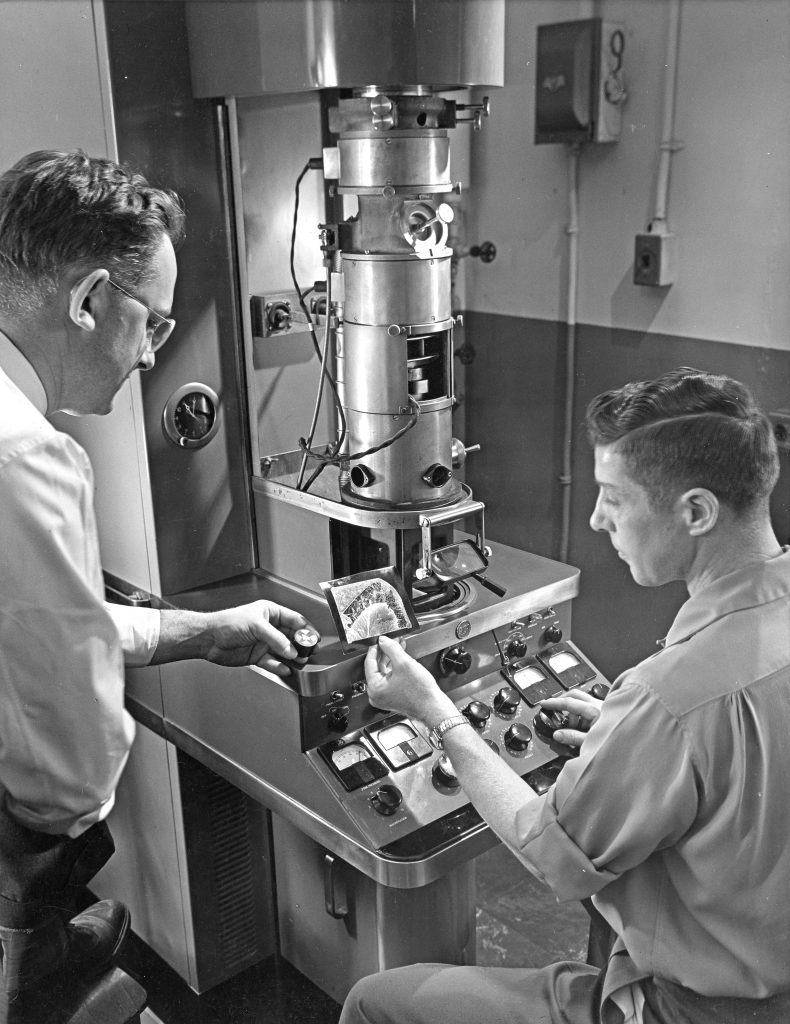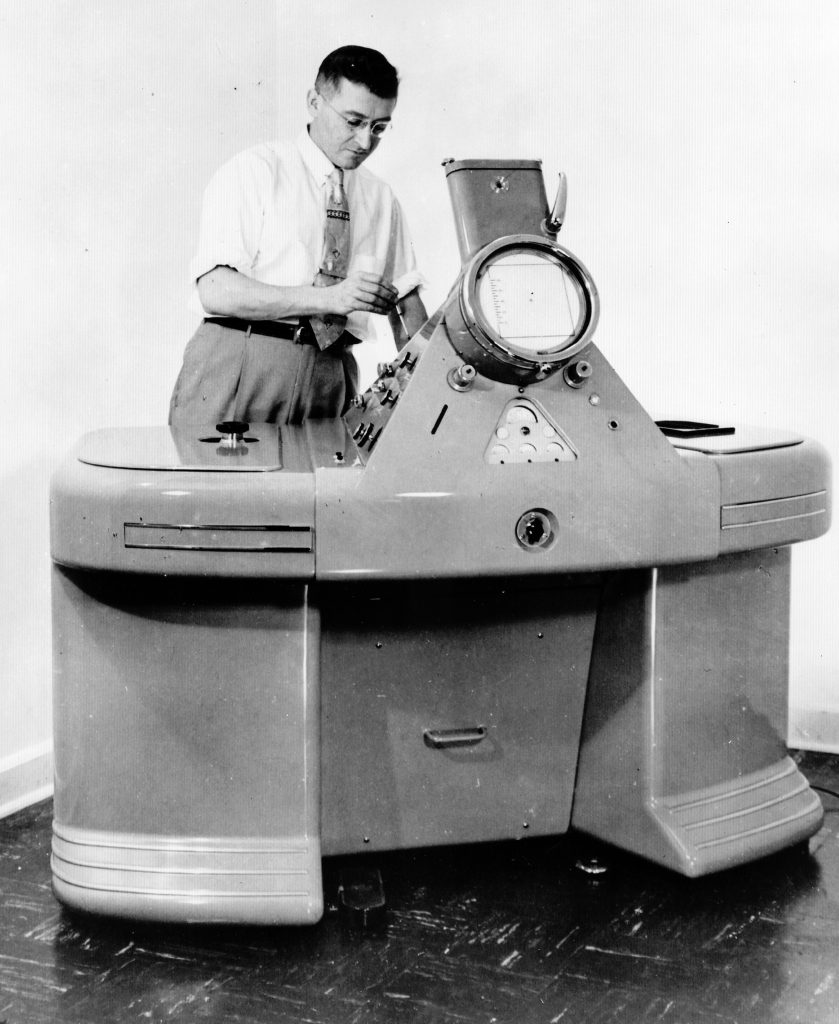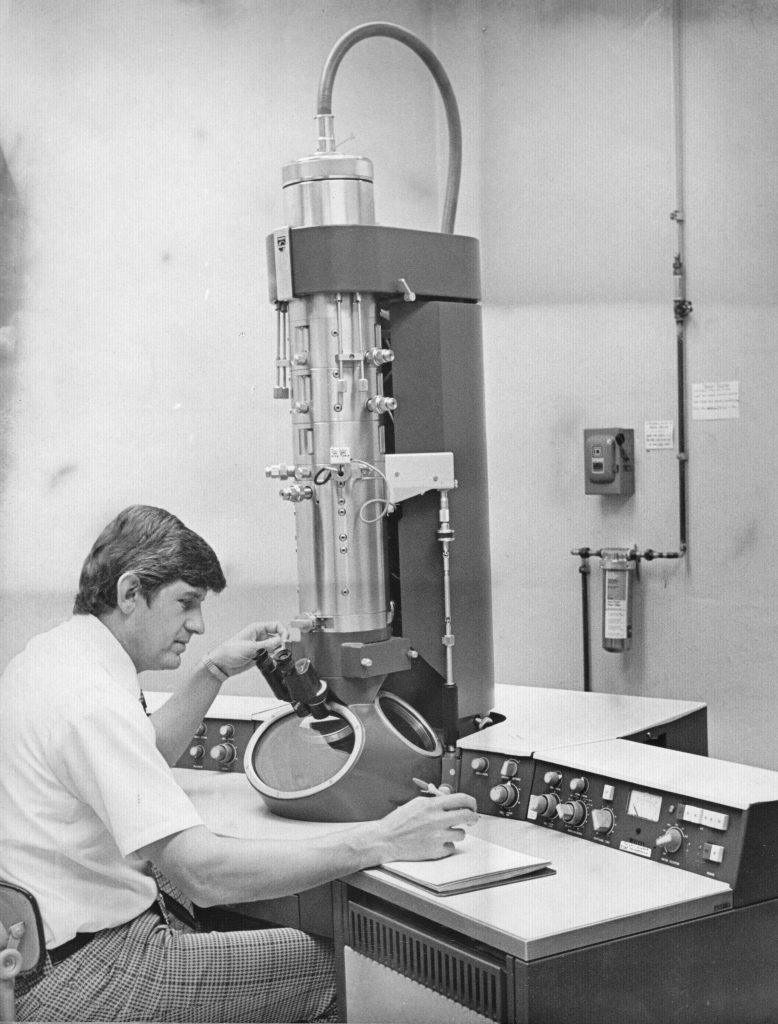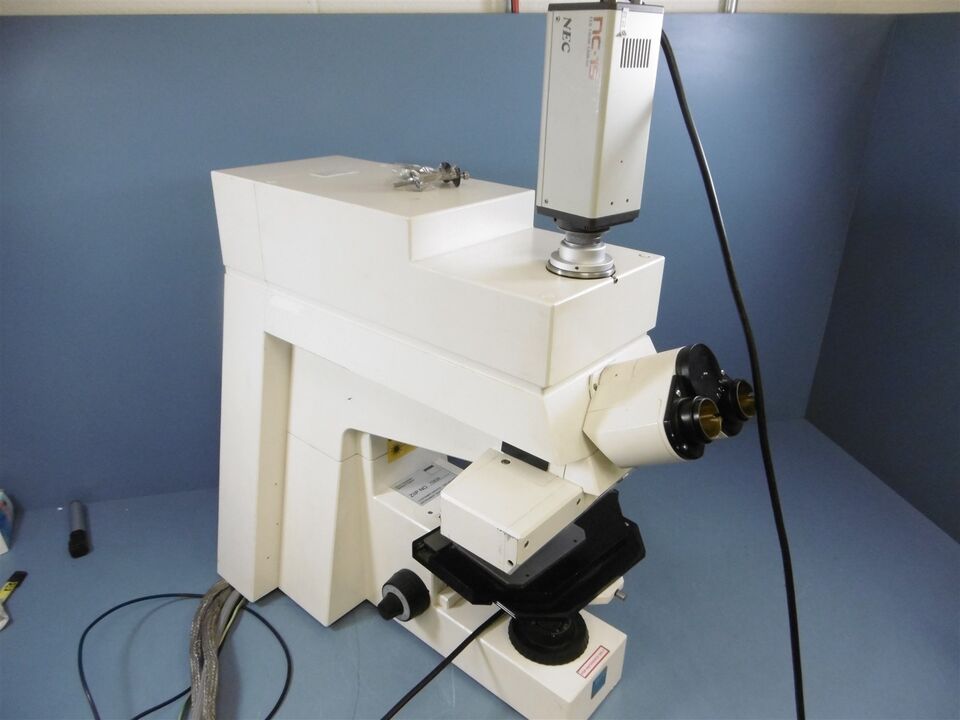Michigan State University was one of the first universities in the country to purchase a transmission electron microscope (TEM) and make it available as a campus core facility.
It began in 1950 when several researchers in the College of Natural Science secured funding to acquire a transmission electron microscope (TEM). They selected the model EMU-2, built by the Radio Corporation of America (RCA). The EMU-2 was a well established model with an excellent reputation. The microscope was located in the basement of the West wing of the Natural Science Building.

As time permitted, the researchers began assisting others on campus with requests to look at their samples. In 1956, a more formal basis was established and the lab became known as the Electron Optics Lab.
This continued until 1960, when MSU recognized that access to a newer TEM with full time operator assistance had become vital to the campus research effort. A Philips model EM-100 was purchased and located in the basement of the newly constructed Biology Research Center.

Dozens of students were taught on the EM-100 microscope in the time frame of 1960 to 1976, when the EM-100 was decommissioned
A Director was appointed in 1960, Dr. Lee Vern Leak, and a full time technician was hired, Ms. June Mack. Dr. Leek left MSU in 1962. He went on to do pioneering work in the ultrastructure of the lymphatic system and would become the chair of the Anatomy Department at Howard University. Other directors have been:
Dr. Gordon Spink 1962 to 1970.
Dr. H. Paul Rasmussen, 1970 to 1972.
Dr. Gary Hooper, 1972 to 1980.
Dr. Karen Klomparens, 1980 to 1998.
Dr. Stanley Flegler, 1998 to 2024.

During the 1960’s, many MSU researchers were introduced to the capabilities of TEM and used the Philips EM-100 at the Biology Research Center. During that time period, major gains in microscope design and resolution were occurring. In 1968, MSU made a decision to construct a well designed electron microscope lab in the basement of the newly constructed Pesticide Research Center (now the Center for Integrated Plant Systems building). A Philips EM-300 TEM was purchased for the new lab, along with the Philips EM-100, relocated from the Biology Research Center. A scanning electron microscope (SEM) was also located in the building. Please see separate article for information on this microscope.

A new Director, Dr. Gary Hooper was hired in 1972. In 1973, along with input from the electron microscope advisory committee, the name of the all-campus facility was changed to The Center for Electron Optics (CEO).
During the early 1990’s, major advances were made in the development of confocal laser scanning microscopes (CLSM). Dr. Joanne Whallon, Department of Crop and Soil Sciences, a major user of the CEO, secured funding for the purchase of a Zeiss LSM-210 and located it in the Plant and Soil Sciences Building. The lab was named the Laser Scanning Microscopy Laboratory with Dr. Whallon as Director. The lab was merged physically and administratively with the CEO on Jan. 1, 2000. The combined lab was renamed the Center for Advanced Microscopy.

The user base at CAM has grown rapidly since 2000. The growth has advanced in all four core areas, SEM, physical sciences TEM, biological sciences TEM, and CLSM (confocal laser scanning microscopy). CAM serves the entire campus with users from nine colleges. CAM was named a University Core Facility in 2000 by Robert Huggett, Vice President for Research and Graduate Studies. The most recent data for calendar year 2023 showed 446 research users from 39 units on campus.


